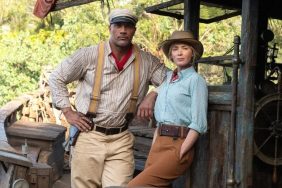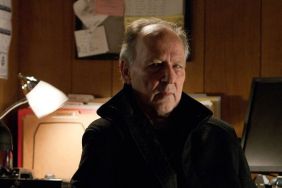
When you begin exploring the work of director Werner Herzog some (if not most) will argue Aguirre, the Wrath of God is likely the best place to start. Though I don’t think you get the full picture of this portion of Herzog’s career without including Fitzcarraldo or the documentary My Best Fiend, which came another 12 years later, detailing Herzog’s work with Aguirre star Klaus Kinski. Without Kinski, Aguirre, Fitzcarraldo and, most likely, Herzog would not be the same. With that in mind, know this is the first review in a coming triptych, meant to build off one another to the point an entire picture begins to form. History, in this case, cannot be ignored.
Considered an entry in the West German New Wave, Aguirre is very loosely based on the accounts of Spanish Dominican monk Gaspar de Carvajal (played in the film by Del Negro) as well as the life of Spanish soldier Lope de Aguirre (played by Kinski). Not entirely meant to be an accurate historical telling, as the narrative is fictional, the characters involved were real and did embark on a journey into the jungle on just such an exploration.
The film is an account of the madness reached by its title character as one of three nobles accompanying Spanish conquistador Gonzalo Pizarro (Alejandro Repulles) on an expedition into the jungles of Peru in the year 1560. The journey was in search of a mythic kingdom of gold, El Dorado, invented by the Indians after the Spanish had conquered the Inca realm.
Herzog opens the film with a shot worthy of today’s IMAX screens and can only, perhaps, be entirely appreciated on such a format. As the haunting score from German band Popol Vuh swells, we’re transported to the misty Peruvian mountains and a shot of a cliffside comes into view. At first you don’t notice, but suddenly an army of soldiers and their Indian slaves come into view, scaling the mountainside, navigating the near-2,000 foot drop while carrying supplies and wearing heavy armor.
The scene plays out for the better part of the opening seven minutes until we’re next thrown into the overgrown jungle. The muddy terrain makes the path near impossible and disease begins killing the Indians who are left to die on the jungle floor. The images on screen seem as real as they can get, because they are. Herzog took to the jungle to shoot Aguirre in linear order and the muddy jungle was just the first obstacle. Scenes aboard a flat wooden raft carrying a horse down a river are equally harrowing, rough and rugged as the expedition reaches an increasing breaking point.
Aguirre, frustrated by the decisions being made, ultimately takes charge, seizing command from Don Pedro de Ursúa (Ruy Guerra) and slaughtering anyone in opposition. He nominates fellow nobleman nobleman Don Fernando de Guzmán (Peter Berling) as new Emperor and the journey continues.
Death is around every corner, but Herzog doesn’t revel in it as much as it’s presented as a given and something every member of this doomed expedition has to look forward to. The most brutal death comes as Aguirre’s sword cuts off a man’s head with such speed, the head rolls to a stop in the grass and finishes the sentence it had been speaking.
Kinski in the role of the increasingly mad Aguirre commands every scene he’s in, if not with his tyrannical rage, with his blue eyes that will bore deep into your psyche. His words are snarled more than spoken and it’s clear why Herzog made not just one film with the maniacal actor, whom Herzog admits in his book “Conquest of the Useless” that, while filming, his production manager, Walter Saxer, would have to clean off “splatters of blood” as Kinski would beat his wife in the halls of the Machu Picchu hotel where he was staying. Kinski’s personal state of madness seems to echo in Aguirre, or is it the other way around?
To read the stories of Kinski’s antics, see them for yourself in My Best Fiend and to then see him portray his characters with an unrivaled intensity makes me wonder if by filming him and reveling in his rage, are we not supporting what he does when the cameras aren’t rolling?
What’s amazing is while watching the film you become so absorbed in the filmmaking, the story and Aguirre himself you forget the stories of the film’s making, but once it’s over they seem to be one and the same. Herzog’s documentary approach to Aguirre (and most all his narrative films) and the guerilla-style cinematography from Thomas Mauch create such an immediacy you can’t help but get swept away, just as the ethereal score almost contributes a state of involuntary hypnosis.
Aguirre, the Wrath of God is available on Fandor.com in HD right now and will be released on Blu-ray as part of a new, limited edition set of Werner Herzog films, releasing on July 29, 2014. For purchasing information click here.









